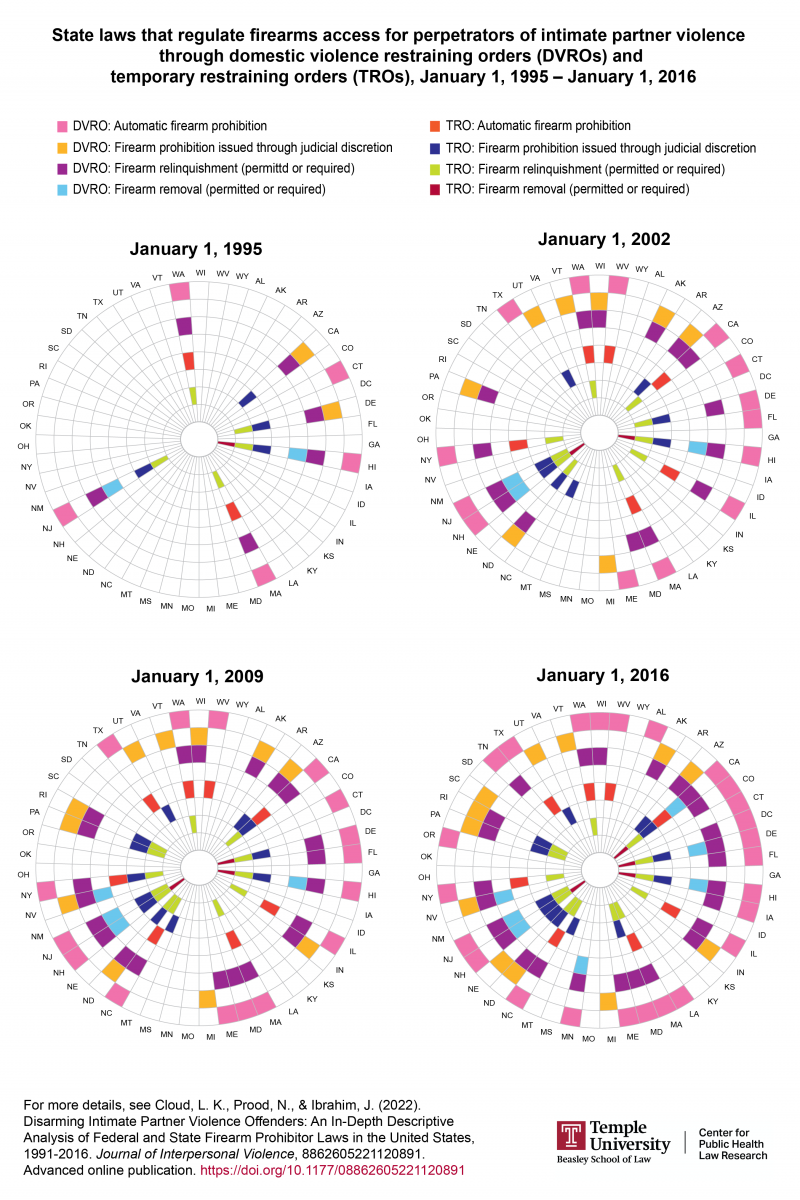Our team was honored to be selected for 11 presentations at the American Public Health Association Annual Meeting this year in Boston. The CPHLR researchers presented on a variety of subjects, spanning the broad range of work we do at the Center each day: opioids and harm reduction, reproductive rights and abortion law, COVID-19 mitigation policies, firearm violence prevention, and strengthening public health authority and workforce capacity. Because not everyone has the privilege of attending APHA, we're bringing some of our presentations to you in a few installments.
Our first category: firearms and intimate partner violence.
Deputy Director, Lindsay K. Cloud, presented during the firearm violence and safety interventions session on November 8, 2022. Her presentation, “Disarming Intimate Partner Violence Offenders: An In-Depth Descriptive Analysis Of Federal And State Firearm Prohibitor Laws In The United States, 1991–2016” describes her recently published research in the Journal of Interpersonal Violence.
Intimate partner violence (IPV) describes acts of physical violence, sexual violence, stalking, and psychological abuse or aggression by current or former intimate partners in heterosexual or same-sex relationships and does not require sexual intimacy.
IPV in the United States:
- IPV affects over 12 million people each year and 1 in 4 women.
- 50 percent of all female homicide victims are killed by their current or former intimate partners.
- Firearms are the most common weapon used in intimate partner homicides.
- Each month, an average of 70 women are killed by their partners using a firearm.
- A woman is 5 times more likely to be killed when an abuser has access to a firearm.

The research measures two civil legal interventions: domestic violence restraining orders (DVROs) and temporary restraining orders (TROs). DVROs, also known as protection or no contact orders, are legal orders issued by state courts to protect individuals against abuse or violence. TROs, also known as ex parte orders, can be issued without notice to the perpetrator, nor require their presence in court, are short-term in length (though, generally in effect until the full hearing date), and are often filed in exigent circumstances.
Using scientific legal mapping methods of policy surveillance, Cloud and a team of researchers developed a longitudinal dataset measuring key features of federal and state laws authorizing or requiring courts to prohibit subjects of DVROs and TROs from purchasing and possessing firearms and oftentimes ammunition (“firearm prohibitor” laws). Support for the legal data was provided by Everytown for Gun Safety.

From 1991 to 2016, 38 states enacted a civil firearm prohibitor laws through DVROs (37 states), TROs (20 states), or both (19 states).
During her presentation, Lindsay provided the following policy recommendations:
- DVRO and TRO laws should contain a firearm prohibitor provision that restricts IPV offenders from purchasing and possessing firearms and ammunition.
- The legal definition of intimate partners should protect all intimate partner relationships.
- States should provide more uniform protection to victims by enacting automatic firearm prohibitions.
- States should strengthen enforcement mechanisms within DVRO laws and TRO laws by requiring the relinquishment or removal of firearms and ammunition at the time the order is issued.
Read Lindsay’s discussion on this data with Temple University’s College of Public Health, available now.
